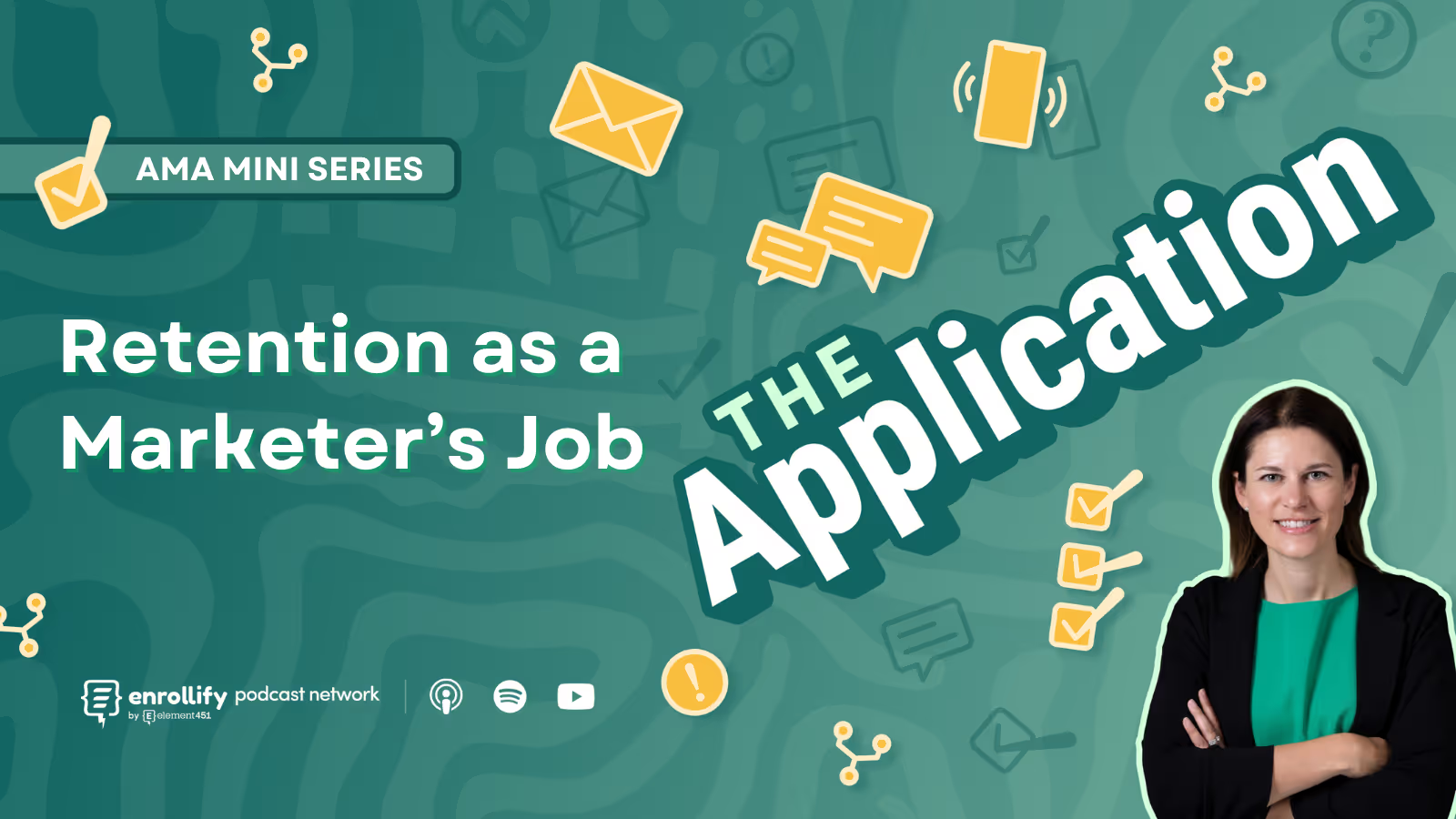About the Episode
In this first episode of our three part series in partnership with Pathify, Dustin speaks with Jessica James, Assistant Director of Orientation and Student Activities at Concordia University - Irvine, about her background and work utilizing digital tools to achieve student success. She explores how her work was shaped by the pandemic and the lessons she learned from that era of higher education about how to best create a digital student experience. Jessica wraps up the episode with some predictions for her work moving forward.
Key Takeaways
- Digital Tools Elevate Orientation and Beyond
- Platforms like Pathify create a one-stop shop for students to access essential information, communicate, and engage with peers and staff.
- Tools like task lists, event check-ins, and ID integrations simplify processes for students and help them acclimate faster to campus life.
- Personalization and Choice Drive Engagement
- Allowing students to build personalized profiles that match their interests with campus clubs and organizations fosters a stronger sense of belonging.
- Offering both transactional tools (like tuition payment portals) and fun, social features keeps students coming back to the app.
- Pre-Orientation Onboarding is Critical
- Giving students access to digital platforms as soon as they deposit helps them prepare for the transition to campus, complete checklists, and build excitement.
- Encouraging students to engage early with features like group chats and task lists ensures they are ready for day one.
- Technology Supports Vulnerability and Belonging
- A connected campus leverages digital tools to create low-barrier opportunities for students to seek help and find their place.
- Human-centered design—like making platforms feel more like social media—creates a welcoming and accessible digital environment.
Episode Summary: FAQs Answered
How does Concordia University, Irvine use Pathify for orientation?
CUI integrates Pathify into their orientation process to provide students with a seamless digital experience. Students gain access to the platform once they submit their deposit, giving them tools like pre-orientation checklists, group features, and campus information. During the week of welcome, students use the platform for session check-ins, ID card functionality, and engaging with campus traditions.
What role do digital tools play in creating a connected campus?
Digital platforms like Pathify act as a centralized hub for communication, resources, and engagement. By integrating with systems like the SIS, students can easily find information like their tuition balance or academic advising schedules. Beyond logistics, tools like interest-based profiles and group chats foster a sense of community and belonging.
How does Pathify support student engagement beyond orientation?
Pathify helps students navigate their entire academic journey. For example, students can find clubs, check their dining balances, book appointments, and communicate with peers—all through a single platform. The app evolves with the student, offering tools and content that support them from their first day to graduation.
Why is personalization important for student success?
Customization drives engagement. At CUI, students can create interest profiles that match them with relevant campus groups and organizations. This "choose your own adventure" approach allows students to feel more connected and in control of their college experience.
What trends are shaping the future of digital tools in higher ed?
Emerging technologies like AI and automation are enhancing the functionality of digital platforms, creating even more seamless experiences for students. AI-powered chatbots, for example, can answer FAQs in real time, while automation streamlines tasks like appointment booking. Institutions must also continue to adapt to the tech-savvy expectations of incoming students.
Crafting a Digital-First Orientation
1. Extending Engagement Beyond Move-In Day
Jessica James emphasizes the importance of transitioning from a single orientation event to a continuous engagement model. By using Pathify, CUI creates opportunities for students to interact with campus resources, peers, and traditions long after the week of welcome.
2. Balancing Transactional and Fun Features
To maximize engagement, CUI balances transactional tools like tuition payments and meal card balances with social and fun elements, such as group chats, task lists, and traditions like climbing "French Hill." This mix ensures the platform is both useful and enjoyable.
3. Bridging Digital and Human Connections
While digital tools are essential, they should complement—not replace—human interactions. Jessica highlights how CUI uses Pathify to connect students with staff, such as financial aid advisors or academic counselors, while also promoting in-person experiences.
Why It Matters
Supporting Students in the Moments That Matter
Jessica shares that today’s students often prefer self-service options and digital tools that minimize friction. Platforms like Pathify allow students to find answers, schedule appointments, and complete tasks without unnecessary barriers, helping them feel supported and confident.
Making Technology Human
A connected campus isn’t just about flashy tech—it’s about designing systems that meet students’ needs and reflect their behaviors. By creating a platform that feels familiar (like Instagram or other social media), institutions can build trust and foster belonging.
Preparing for the Future
As technology continues to evolve, institutions must stay agile. From integrating AI to adapting communication plans, Jessica emphasizes the importance of using tech to meet students where they are while maintaining a human-centered approach.
Final Thoughts
Jessica leaves us with a powerful takeaway: "A connected campus begins with people. Institutions are full of humans, and when we prioritize relationships—between students, staff, and faculty—the result is a campus where everyone feels they belong."
Whether it’s creating a seamless orientation experience or providing easy access to academic support, digital tools like Pathify are helping campuses meet students’ needs in new and innovative ways.
This Episode is Sponsored by Pathify
Meet Pathify — an innovative higher ed engagement hub that puts students at the center of their college journey. Pathify sits at the center of your school’s digital ecosystem, becoming the single, user experience interface tying together all systems, content, and communications. Their engagement hub elevates the information that matters most and pushes systems like the SIS behind the scenes where they belong, making it simpler for students to discover and engage with the opportunities your institution provides at every step of their higher ed journey, from prospect to alumni. What’s even better, Pathify has a mobile experience that provides 100% parity with the responsive web app, so your campus app is always in sync. Pathify is a platform that EVERY stakeholder on campus — from marketing, to admissions, to student affairs, to IT, etc., — can get equally excited about. Learn more about how Pathify is uniting strategic units across campus and bettering the entire student experience by visiting Pathify.com
About the Enrollify Podcast Network:
The Higher Ed Geek is a part of the Enrollify Podcast Network. If you like this podcast, chances are you’ll like other Enrollify shows too!
Our podcast network is growing by the month and we’ve got a plethora of marketing, admissions, and higher ed technology shows that are jam packed with stories, ideas, and frameworks all designed to empower you to be a better higher ed professional. Our shows feature a selection of the industry’s best as your hosts. Learn from Jeremy Tiers, Zach Busekrus, Jaime Hunt, Allison Turcio, Jamie Gleason and many more.
Learn more about The Enrollify Podcast Network at podcasts.enrollify.org. Our shows help higher ed marketers and admissions professionals find their next big idea — come and find yours.







-1.avif)







